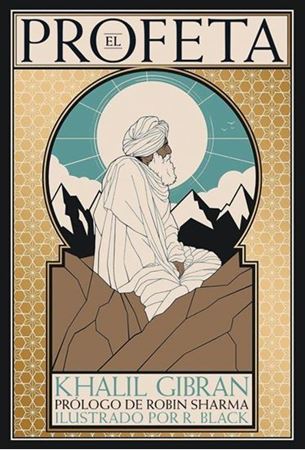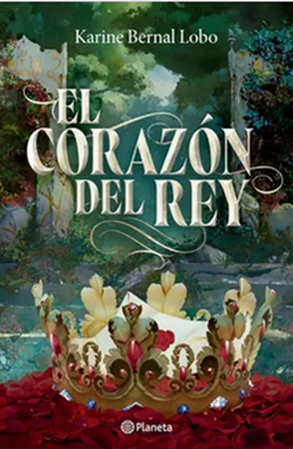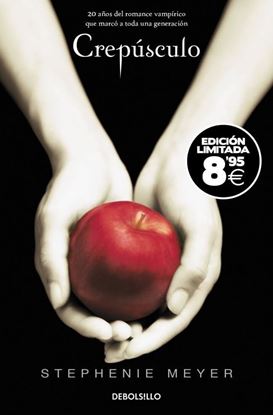

NOVEDADES
CREPUSCULO (ED. BLACK F.)(SAGA CRESP. 1)
Cuando Isabella Swan se muda a Forks, una pequeña localidad del estado de Washington donde no deja de llover, piensa que es lo más aburrido que le podía haber ocurrido. Pero su vida da un giro excitante y aterrador una vez que se encuentra con el misterioso y seductor Edward Cullen. Hasta ese momento, Edward se las había arreglado para mantener en secreto su identidad vampírica, pero ahora ya nadie está a salvo, ni siquiera la persona a quien él más quiere: Isabella.
750
563
LOS DIAS QUE COSEMOS JUNTAS (BF) (BOL)
Madrid, 1999. Desde que las protagonistas de Siete agujas de coser se reunieron por primera vez en El Cuarto de Costura, sus vidas han cambiado mucho. Algunas han cumplido sueños que creían imposibles de alcanzar y otras han logrado deshacerse de aquello que no les hacía libres ni felices. Sin embargo, ante la llegada de un nuevo curso, el pasado vuelve con fuerza para sacudir los cimientos de todo lo que han conseguido y para mostrarles que, aunque sigan el patrón al dedillo, cada día es una oportunidad para cambiar.
Una vez más, será en la amistad entre mujeres donde encuentren las respuestas para enfrentarse a los secretos, a la maternidad y al amor inesperado...
En cada una de ellas podemos ver un reflejo de nosotras mismas. Al fin y al cabo, es en ese hilo invisible que nos une donde se encuentra la clave de la costura y de la vida: lo importante no es la primera ni la última puntada, sino el resultado de todas.
750
563
ENSEÑAME A LEER
¿Y si enseñar a leer y escribir pudiera ser una experiencia natural y emocionante, donde los niños disfruten, se diviertan durante el proceso y sientan que son respetadas sus necesidades de desarrollo? El secreto es Montessori. Este libro representa la guía práctica más completa para familias, educadores y profesionales del ámbito educativo que quieran enseñar a leer y escribir con éxito bajo los principios del método Montessori, desde una base sólida y respaldada por la ciencia.
Por fin un manual detallado para entender y aplicar el método pedagógico que usan miles de maestros en todo el mundo.
1,450
1,088
TODAS LAS NOVELAS
Dashiell Hammett escribió solo cinco novelas, pero con ellas marcó el rumbo que debía seguir todo el género negro a partir deentonces. Supo crear personajes carismáticos y memorables; imaginó historias oscuras dominadas por la falsedad, la corrupción y el vicio; y recreó atmósferas violentas y recargadas que aún hoy resultan impactantes. Desde la legendaria El halcón maltés, protagonizada por Sam Spade, hasta la sofisticada El hombre delgado, pasando por las imprescindibles obras narradas por el impenetrable agente de la Continental (Cosecha roja, La maldición de los Dain) y La llave de cristal, todas las novelas de Dashiell Hammett suponen una cita ineludible para cualquier amante del género. Como dijo de él Raymond Chandler: «todo lo que hizo lo hizo de un modo soberbio».
2,750
2,063
TRAGEDIAS I (TD)
EL MÁS TRÁGICO Y MODERNO DE LOS AUTORES TEATRALES DE LA ANTIGÜEDAD.
Este primer volumen de las tragedias de Eurípides, el más inquieto y apasionado de los tres grandes autores trágicos griegos, incluye, además de una nueva introducción general a cargo de Lucía Romero Mariscal (Universidad de Almería), incluye las obras: El Cíclope, Alcestis, Medea, Los Heraclidas, Hipólito, Andrómaca y Hécuba.
1,750
1,313
TRAGEDIAS II (TD)
Eurípides es el más inquieto y apasionado de los tres grandes autores trágicos griegos. Seguramente también es el más influyente, gracias a su sensibilidad poética, más cercana a la actual. A diferencia de Esquilo y Sófocles, que le precedieron, Eurípides humaniza y dota de carácter realista al mito, da rienda suelta a los arrebatos poéticos, a la vez que también se muestra muy racionalista. En este contraste contradictorio radica parte de su encanto y de su modernidad.
El segundo tomo de las tragedias completas de Eurípides en la Biblioteca Clásica reúne las obras: Las suplicantes, Heracles, Ion, Las troyanas, Electra e Ifigenia entre los tauros.
1,600
1,200

























